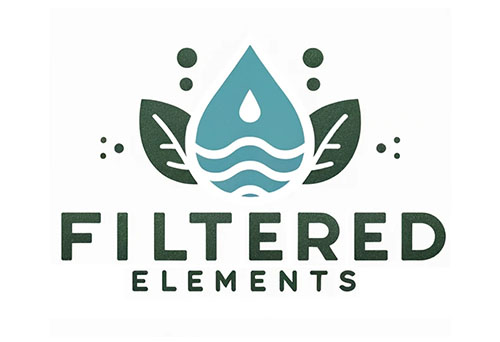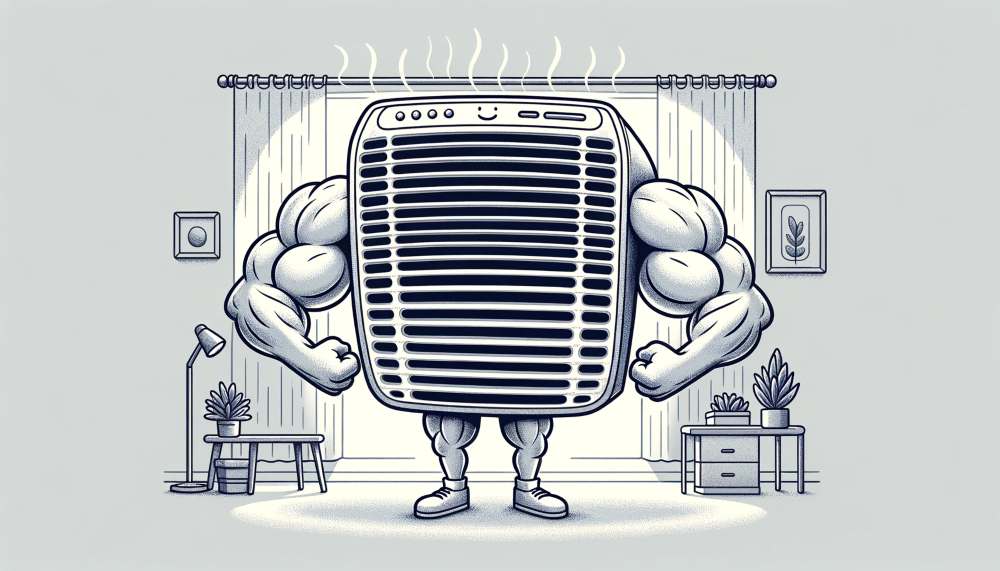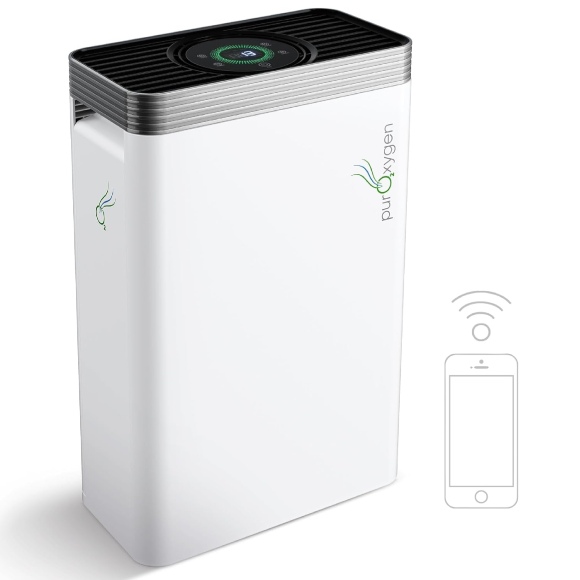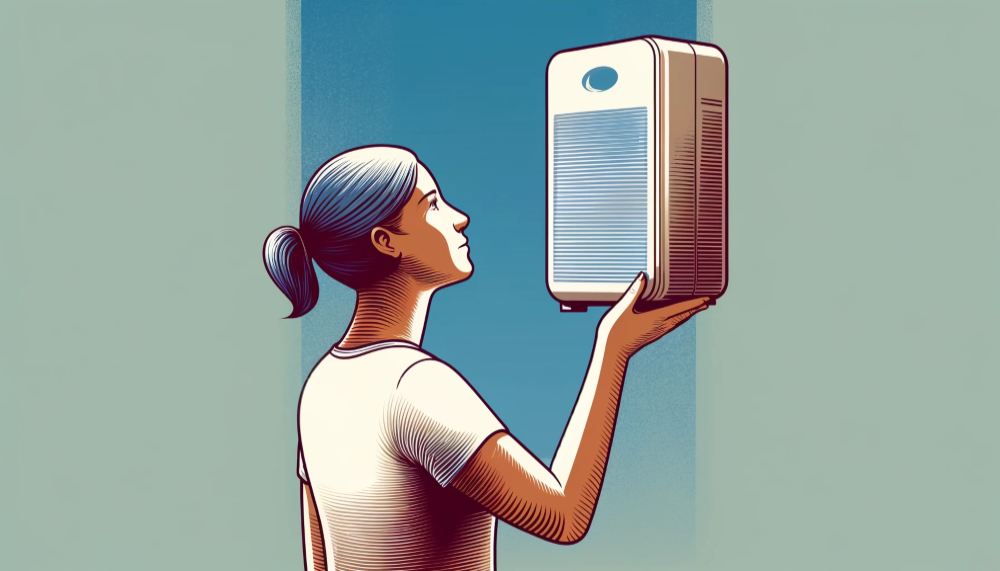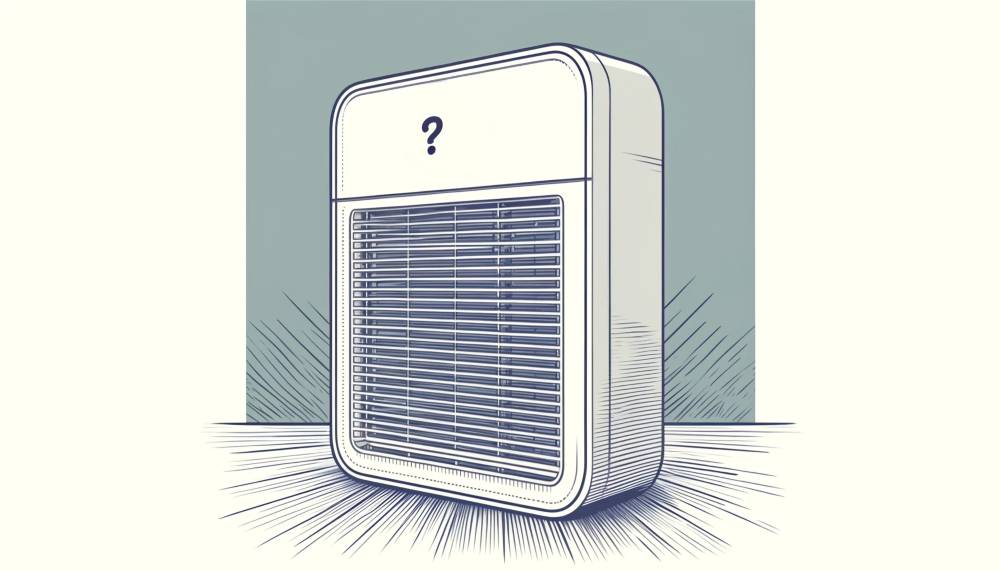Air purifiers play a crucial role in cleaning the air inside our homes and offices, removing pollutants like dust, pollen, and smoke that can affect our health and comfort. While we often worry about choosing an air purifier that’s effective enough, some also question if an air purifier can be too large for a space.
Getting an air purifier that covers more space is totally fine, there are just a few things you will want to consider first. Higher initial cost, as well as increased energy costs are the main concerns. Higher coverage area purifiers also take up more space and often produce more noise.
This guide explores exactly that, helping you understand the balance between size and efficiency in air purifiers, ensuring you make the best choice for your environment. Additionally, we will cover how to calculate what size you need, along with considering other factors to find the perfect air purifier for your space.
The Basics of Air Purifier Efficiency
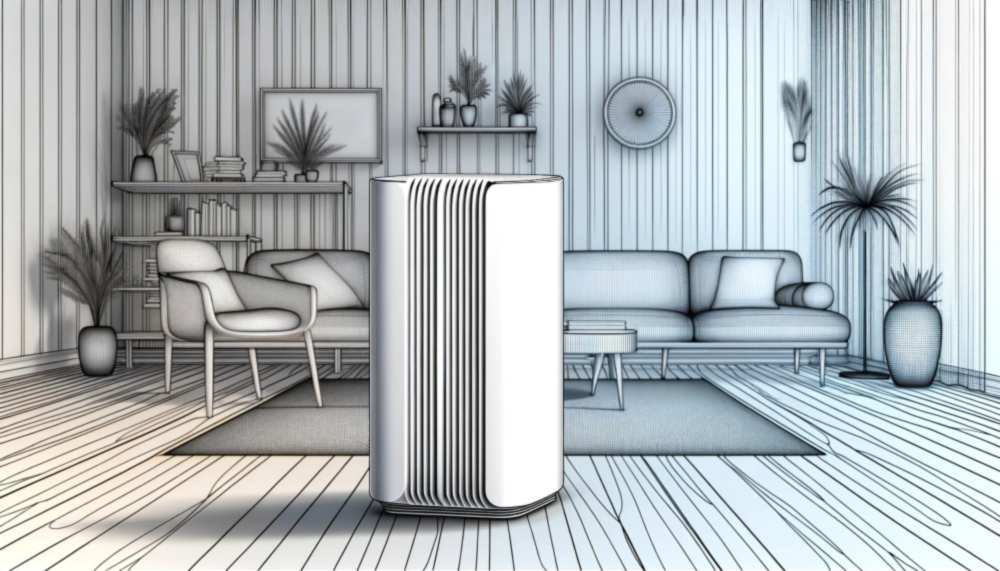
Air purifiers enhance indoor air quality by pulling in polluted air from the room, passing it through various filters that trap and remove harmful particles, and then recirculating the purified air back into the environment. This continuous cycle is very helpful for maintaining a healthy indoor atmosphere.
There are several types or features of air purifiers, each designed to address specific air quality issues:
- HEPA filters are highly effective at capturing extremely small particles, such as pollen, dust mites, and pet dander, which are common triggers for allergies and respiratory issues.
- Carbon filters excel at absorbing odors and gases, making them ideal for environments exposed to smoke, cooking fumes, or chemical vapors.
- UV lights target the DNA of microorganisms like bacteria and viruses, rendering them harmless, thus ensuring the air is not only clean but also hygienic.
- Ionic purifiers work by emitting a cloud of negative ions into the air that latch onto pollutants, causing them to fall from the air so they can be cleaned up from surfaces more easily.
To fully understand the capability of an air purifier, two key specifications are particularly crucial:
- CADR (Clean Air Delivery Rate): This metric quantifies the volume of filtered air delivered by the purifier, with separate scores for tobacco smoke, dust, and pollen. The higher the CADR, the more quickly and efficiently the purifier can clean the air.
- ACH (Air Changes per Hour): This rate measures how many times the purifier can exchange the air within a room each hour. A higher ACH indicates a more effective air purifier that can cycle air through more frequently, crucial for maintaining an environment free from pollutants.
See our Best Air Purifier Features guide so you can know everything you should be looking for in an air purifier.
Why Air Purifier Size Matters
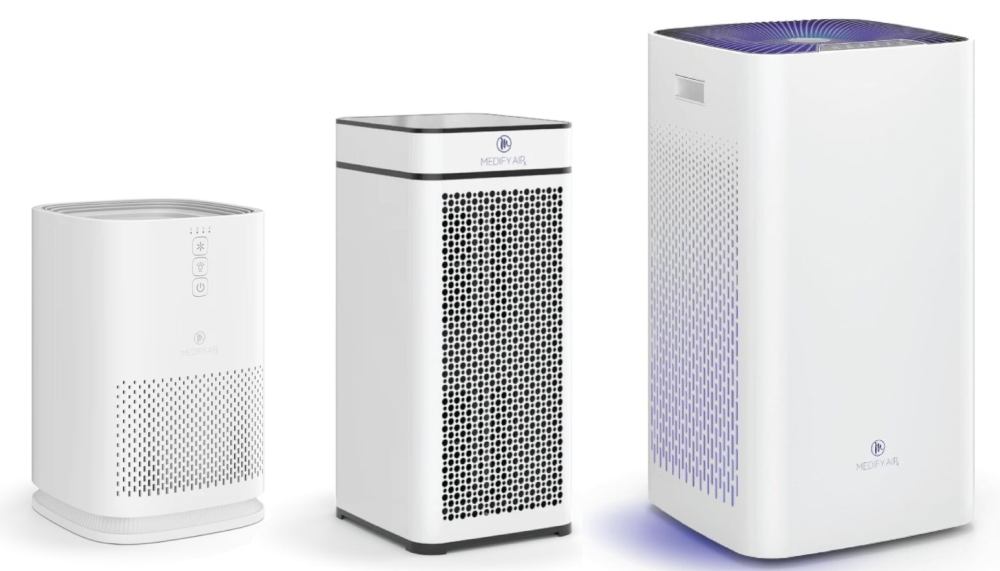
Choosing the right size for an air purifier involves more than just matching it to the room size; it’s about understanding when a unit with a larger coverage area might be preferable and recognizing the trade-offs involved.
Scenarios Where a Larger Air Purifier Might Be Considered:
- Large Open Spaces: In open-concept homes or spaces with high ceilings, a larger air purifier can handle the greater volume of air more effectively.
- High Pollutant Levels: Environments with high levels of pollutants, such as homes near busy streets or industrial areas, might benefit from a larger purifier’s enhanced cleaning capabilities.
- Allergy or Asthma Sufferers: For those with severe allergies or respiratory conditions, a more robust air purifier can provide the thorough air cleaning necessary to maintain a healthy living environment.
Pros of Using a Larger Air Purifier:
- Faster Air Purification: A larger purifier can circulate and clean the air in a room more quickly, reducing the time it takes to remove contaminants significantly.
- Potentially Quieter Operation at Lower Speeds: When a larger unit operates on a lower setting, it can maintain effective air purification with reduced noise, making it ideal for night-time use or in quiet environments like libraries or bedrooms.
Cons of Using a Larger Air Purifier:
- Higher Initial Cost: Larger air purifiers are typically more expensive not only to purchase but also to install if professional installation is needed.
- Increased Energy Consumption: While providing more power, they also tend to consume more electricity, which can increase utility bills, especially if the unit runs continuously.
- Space Considerations and Aesthetic Issues: The physical size of larger air purifiers can be a drawback, as they take up more floor or shelf space. This can interfere with room aesthetics and functionality, particularly in smaller rooms or spaces where every square foot counts.
How to Choose the Right Size Air Purifier
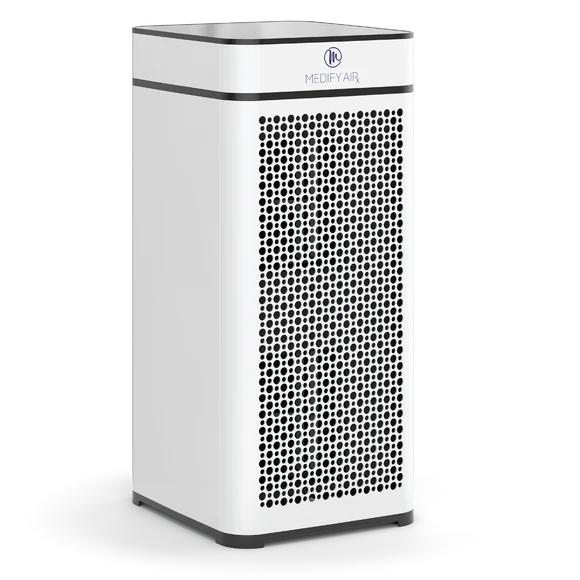
- True HEPA 13 Filter
- Activated Carbon Filter
- Ideal for Large Bedroom or Living Room
- Room Coverage (hr): 1793 sq ft
- Lifetime Warranty
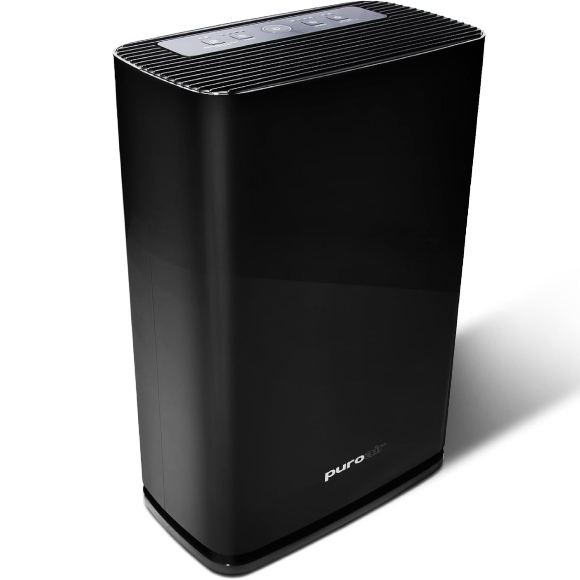
- True HEPA 14 Filter
- Activated Carbon Filter
- Ideal For Large Central Room
- Room Coverage (hr): 2145 sq ft
- Two Year Warranty
Selecting the correct size air purifier is crucial for effective air cleaning without wasting energy. Here’s a detailed guide to ensure you get the best fit for your space.
Step-by-Step Guide to Measuring Room Size and Calculating Needed CADR:
- Measure Your Room: Calculate the square footage of the room where the air purifier will be used by multiplying its length by its width.
- Calculate the CADR: The Clean Air Delivery Rate (CADR) should be at least 2/3 of your room’s square footage to clean the air effectively. For instance, a 300 square foot room needs a purifier with a CADR of at least 200. This ensures it can handle the typical air volume of the space.
- Adjust for Ceiling Height: If your ceilings are higher than the standard 8 feet, adjust the CADR accordingly: CADR x (Ceiling Height / 8) = Adjusted CADR. This formula helps accommodate the additional air volume in rooms with high ceilings.
Considerations Beyond Room Size
- Pollution Level: If your home is near high-pollution areas, consider an air purifier with a higher CADR. Additionally, select filters that are specifically designed to capture the types of pollutants prevalent in your area. It’s particularly important to choose an air purifier with enhanced carbon filtration if your environment contains high levels of smoke or chemicals.
- Allergies and Asthma: Choose air purifiers with HEPA filters, as they are the most effective at trapping fine particulates that aggravate allergy and asthma symptoms. Ensuring the air purifier is adequately sized for your room will also help maintain filter efficiency and lifespan.
- Pets: Choose a purifier with a robust pre-filter to capture larger particles like pet hair and dander before they reach finer filters. Larger air purifiers might cycle more frequently in small spaces, leading to quicker filter degradation, so consider the size carefully based on your specific pet-related needs.
- Noise Levels: Consider how the size of the air purifier can impact noise levels. Larger units with more powerful fans may operate at higher decibel levels, which could be disruptive in environments like bedrooms or offices where quiet is valued.
- Filter Lifespan: Be aware that larger air purifiers with higher CADR ratings might go through filters more quickly, especially when used in smaller rooms due to the higher air turnover rate. This could necessitate more frequent filter replacements.
- Frequent Cycling: A powerful air purifier in a small room may cycle on and off frequently, which can prevent the unit from thoroughly cleaning the air of all pollutants and may also wear out the purifier faster.
- Placement and Airflow: The effectiveness of an air purifier also depends significantly on its placement. To optimize airflow and coverage, place the unit in a central location within the room with minimal obstructions. Proper placement ensures the most effective air cleaning and enhances overall unit efficiency.
Recommendations for Different Types of Spaces
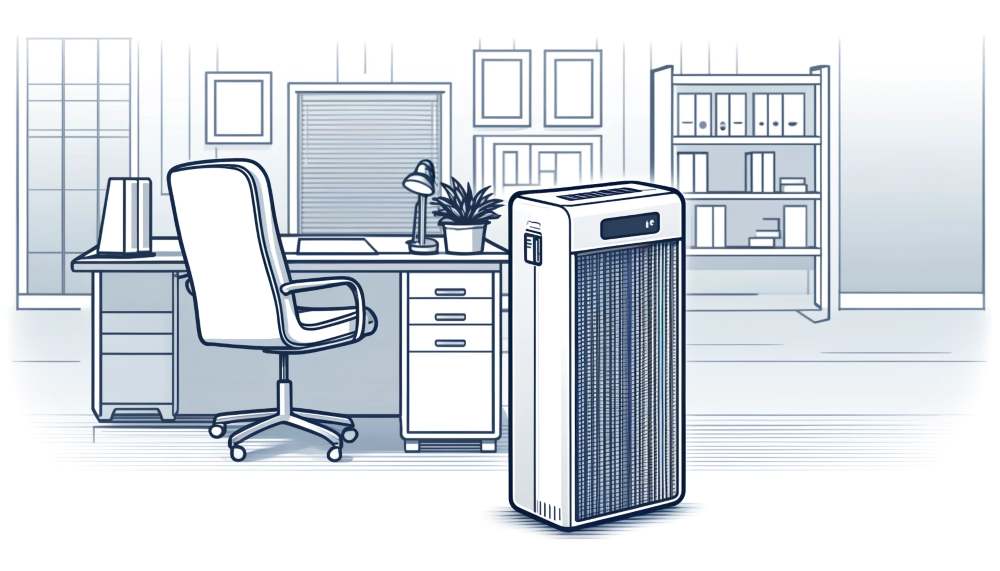
By carefully following these guidelines and considering your specific needs, you can choose an air purifier that effectively improves indoor air quality while optimizing energy use and fitting seamlessly into your lifestyle.
Final Thoughts
Choosing the right air purifier is crucial for enhancing the air quality in your home or office while ensuring efficiency and minimizing unnecessary costs. When selecting an air purifier, it’s generally advisable to do some calculations and opt for a unit that provides a bit more coverage than what your space strictly requires. This approach allows for more flexibility in handling fluctuating air quality conditions and ensures the purifier remains effective under various circumstances.
While a larger air purifier can quickly clean larger volumes of air, it’s essential to balance this capability with considerations like energy consumption, space requirements, and the specific needs of your environment. By understanding the various types of purifiers available, their key specifications like CADR and ACH, and the specific requirements of your space—whether it’s a high-pollution area or a home with pets—you can make an informed decision that ensures your air purifier is neither too small to be effective nor too large to be economical.
